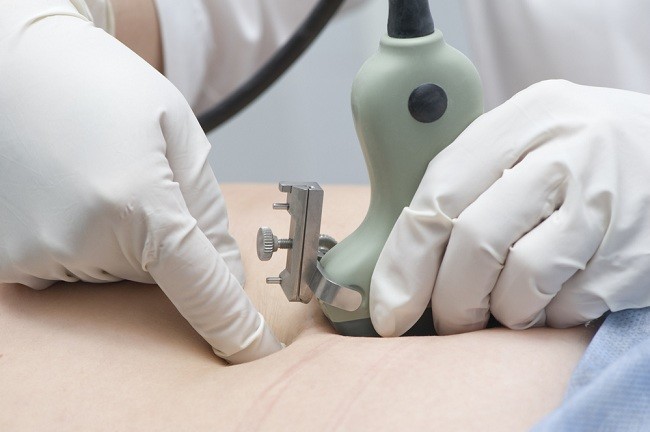Definition Of Retained Placenta
Definition Of Retained Placenta - Retained placenta is when the placenta retained in the womb or out over timescales should be, ie 30-60 minutes after delivery. Retention of the placenta is considered an important condition because it is one of the causes of postpartum hemorrhage (postpartum).

The placenta is an organ that is formed in the uterus when pregnancy begins. Baby's umbilical cord also grew out of this organ. The placenta functions as a provider of nutrients and oxygen to the fetus and maintain the cleanliness of the blood of substances that are not needed. Generally, the placenta attached to the uterine wall the top or side during pregnancy.
CAUSES OF RETENTION PLACENTA
Retention of the placenta is one of the causes of post-natal bleeding most often occurs. Mothers with retained placenta had post-natal bleeding risk five times greater than those who did not experience retained placenta.There are three types of conditions that cause the incidence of placental retention, ie adherens placenta, placenta accreta and placenta trapped.placenta adherensThis condition is caused by a lack of uterine contraction given to remove the placenta making the placenta remains attached to the uterine wall. This condition is a type of placenta retention of the most common.placenta accretaThis condition is caused by the placenta attached to the uterine wall, making it difficult for labor and trigger heavy bleeding.Trapped placentaAlthough the placenta had detached from the uterine wall, but there is still a risk to remain in the uterus as a result of being shut cervix under wombAside from the above, some conditions may increase the risk of placental retention, such as:
- Infants who died in the womb.
- Undergoing when one or two prolonged labor.
- Giving birth early, before reaching the age of 34 weeks gestation, also known as preterm labor.
- Aged over 30 years
If not promptly treated, retained placenta can affect the health of the mother, it can even lead to death due to lack of blood.
SYMPTOMS RETENTION PLACENTA
Retained placenta either partially or completely, within one hour after the delivery process is over, a major symptom of the condition of retained placenta. Other symptoms that usually appear one day after the delivery process is over is:
- Heavy bleeding that does not stop
- The pain is unbearable
- Fever
- reduced ASI
- The exit portion of the placenta tissue of the vagina smell bad
DIAGNOSIS RETENTION PLACENTA
The doctor will check the placenta has been expelled from the uterus to ensure that the placenta has come out fully complete. However, in some cases labor, the doctor may not be aware of their part of the placenta that is lost, left behind or are still stuck in the womb. In this condition, usually the patient will immediately show symptoms as described.
The doctor will immediately recognize this condition of the patient's symptoms are felt. The doctor will also carry out investigations to observe the condition of the uterus using ultrasound waves.
HANDLING OF RETENTION PLACENTA
Retention of the placenta is handled by way of the placenta from the uterus to prevent complications. Some procedures are commonly used to remove the placenta, among others:
- Using drugs that will make the uterus to contract or otherwise, be relaxed, so that the body can remove the placenta by itself. In general, the drug will be administered in the form of injections so that the placenta detached and out of the womb with the help of contraction. Drugs in the form of intravenous fluids may also be given to prevent blood loss more.
- The placenta from the uterus by hand. This procedure can be done with the help of drugs and with caution because it can increase the risk of a patient having an infection.
- The doctor will advise the patient to urinate to deflate the bladder that may hinder the placenta from the uterus.
- The doctor may also advise patients to immediately feed to trigger the release of hormones that can increase uterine contractions and so helped to put out the placenta.
- In addition to the above procedures, there is still a surgical procedure that could be the choice of treatment by doctors to remove the placenta from the uterus. This procedure is the latest step taken when procedures were not successful because the surgical procedure can lead to complications.
- Retained placenta causes blood vessels attached to this organ continues to drain the blood, causing bleeding in a sustainable manner. Other complications due to this condition is the womb becomes unable to close completely and inhibit the body's natural attempt to stop the bleeding.
- Bleeding in a significant number of course can threaten the patient's life. Patients who have had the condition of retained placenta in a previous pregnancy should talk to your doctor before delivery time arrives.
- As a precaution, the doctor will recommend the delivery of drugs or perform certain procedures after the baby is born and before the placenta from the uterus, such as:
- Procedures controlled cord traction (CCT) after the placenta separates from the uterus. The doctor will clamp the umbilical cord and then slightly pull the umbilical cord while pressing on the abdomen of the mother.
- Using drugs containing oxytocin to stimulate uterine contractions in the placenta.
- Perform a light massage around the area of the uterus after the baby is born. The doctor will also advise patients to perform this procedure to restore the size of the uterus, stimulating contractions, and help stop the bleeding.
Sumber: Alodokter


